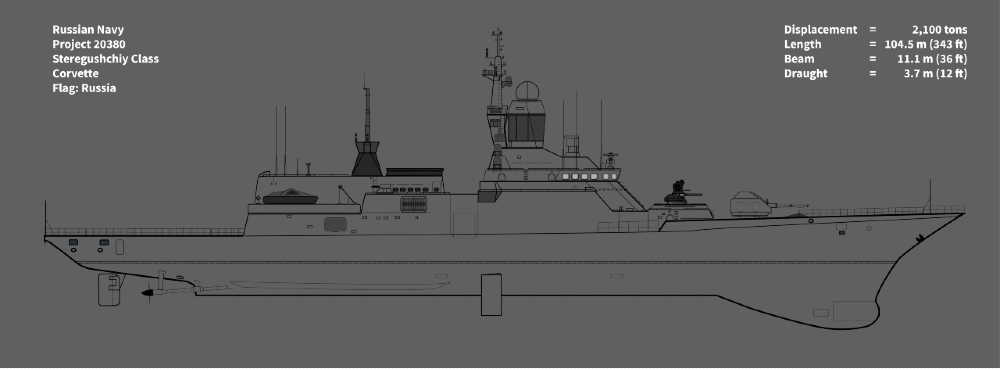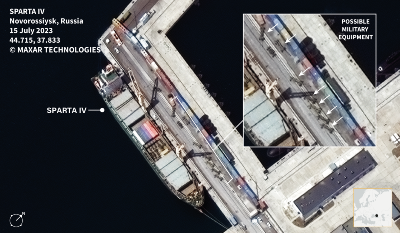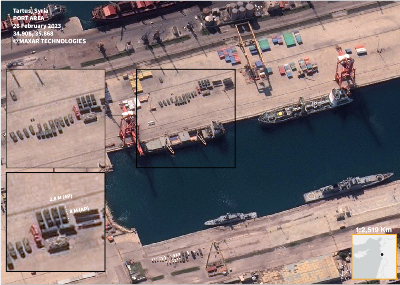Hunting the ghost ship: How an IA professor tracked the SPARTA IV
News
The phrase “ghost ship” conjures up images of Halloween stories and legends of Davy Jones. However, for Giangiuseppe Pili, professor of Intelligence Analysis, it brings to mind a different name: SPARTA IV. Pili and his team conducted a lengthy investigation tracking the Russian cargo vessel SPARTA IV. Their findings revealed that the ship, despite Russia’s claims of carrying civilian goods, was actually involved in transporting military supplies.
Before joining JMU, Pili was part of the Open Source Intelligence and Analysis (OSIA) group at the Royal United Services Institute (RUSI). His work focused on monitoring how North Korea evades sanctions, often by using ships to transport illicit cargo.
Pili's interest shifted when he learned about Russia’s evasion of sanctions and the SPARTA IV. Driven by a strong sense of responsibility and accountability, he decided to investigate the true nature of the SPARTA IV. His motivation was firmly grounded in his belief that such actions, at the very least, were unreasonable from an international security perspective and needed to be addressed.
sense of responsibility and accountability, he decided to investigate the true nature of the SPARTA IV. His motivation was firmly grounded in his belief that such actions, at the very least, were unreasonable from an international security perspective and needed to be addressed.
Pili's team included himself, Jack Crawford, a research analyst at RUSI, and Nick Loxton, the head of intelligence delivery at Geollect. They used open-source intelligence from RUSI and Geollect, an intelligence firm, to unveil the truth about the SPARTA IV. Open-source intelligence differs from data obtained from traditionally secretive agencies because it is freely available to the public. This accessibility can result in more efficient work.
“The speed and the shareability of all the material is absolutely incomparable to any secret operation,” Pili explained, “exactly because it’s not secret.”
Open-source intelligence provided Pili and his team access to swathes of information about the ship. For example, Automatic Identification System (AIS) logs revealed that the SPARTA IV had turned off its AIS for extended periods while at sea. AIS is required for all seafaring ships because of safety and security purposes. Any ship that deactivates it raises immediate concerns, especially when it isn’t in danger and turns off AIS voluntarily.
example, Automatic Identification System (AIS) logs revealed that the SPARTA IV had turned off its AIS for extended periods while at sea. AIS is required for all seafaring ships because of safety and security purposes. Any ship that deactivates it raises immediate concerns, especially when it isn’t in danger and turns off AIS voluntarily.
The SPARTA IV mainly sailed between Tartus, Syria, and Novorossiysk, Russia. These two ports are separated by straits that Turkey restricted to civilian ships only. This wouldn’t be noteworthy, except for the amount of time SPARTA IV spent in areas reserved for military purposes. Most civilian vessels dock in regular commercial areas, even during wartime. “When you consistently see a ship close to military material ... you start to ask very interesting questions,” Pili highlighted.
 To determine if the “ghost ship” actually transported military cargo, Pili created an illustrated diagram with precise measurements. His calculations revealed that 17 trucks commonly used by the Russian military could fit inside the SPARTA IV. At the same time, the team utilized satellite imagery to confirm what the ship was carrying. They repeatedly found unusual sightings: While the SPARTA IV was near Russian warships, its cranes used to move containers were askew, and in February, 17 trucks that resembled the same model Pili used were found on the SPARTA IV.
To determine if the “ghost ship” actually transported military cargo, Pili created an illustrated diagram with precise measurements. His calculations revealed that 17 trucks commonly used by the Russian military could fit inside the SPARTA IV. At the same time, the team utilized satellite imagery to confirm what the ship was carrying. They repeatedly found unusual sightings: While the SPARTA IV was near Russian warships, its cranes used to move containers were askew, and in February, 17 trucks that resembled the same model Pili used were found on the SPARTA IV.
These findings immediately raised suspicion for Pili and his team. His role as an analyst allowed him to combine a diverse set of data into a compelling case against the SPARTA IV — confirming that it was posing as a civilian ship to gain entry into and out of the Black Sea. This charade allowed for the transportation of military assets into Russia and aided logistical efforts for the current war with Ukraine.
However, the SPARTA IV also revealed a shocking fact: It was part of a more extensive operation. “One instance, one tree of a bigger forest,” Pili said. “Nobody realized that it was just a ship out of many, and all framed under the Minister of Defense.”
The SPARTA IV was owned by a state enterprise with ties to Deputy Minister of Defense Timur Ivanov — one of the most important people in Russia. Pili was amazed by the effectiveness of his team’s report. “The fact that we were able to track everything to such an extent was exciting,” he noted. “Understanding the depth and importance of the operation to the Russians was definitely one of those [memorable] moments.”
Pili was surprised by the reception of his report. First published under RUSI, it gained further exposure from the US Naval Institute and NATO Defense College. Mainstream news sources also caught on. The Telegraph, Newsweek, the Global Herald and the Italian Society of Intelligence all shared their insights on the report’s findings. The worldwide recognition and coverage now provide policy and decision-makers with the information to determine what course of action to take regarding the SPARTA IV and its peers.
“Intelligence is an incredible window into understanding how the world operates. It’s something that an average person who is not closely involved would find it hard to appreciate — the multitude of factors that shape the world we see,” Pili said.
Learn more about the Intelligence Analysis major.
Photo Credits
Satellite imagery: RUSI – OSIA and Maxar Technologies
AIS Data: Geollect

